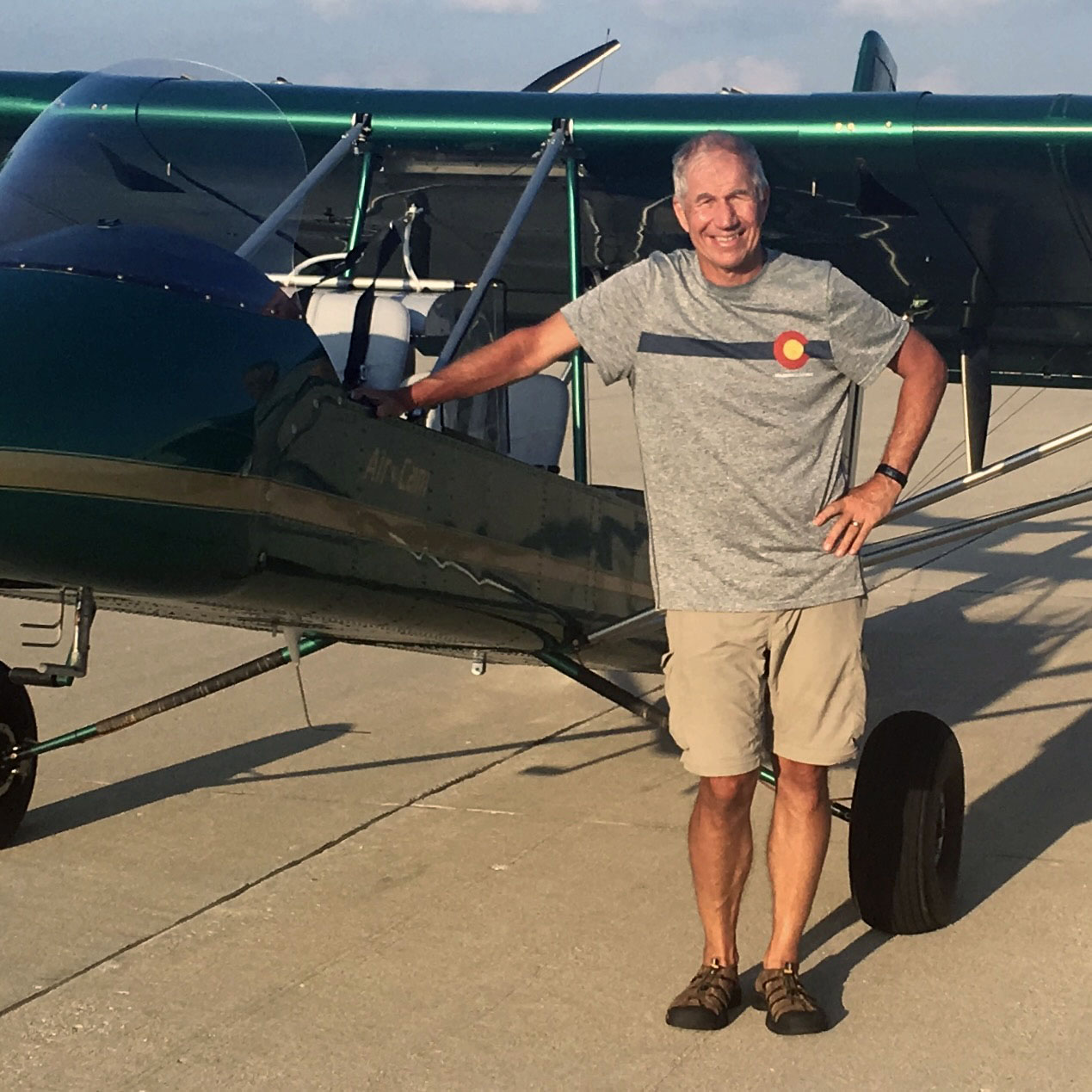A 'close encounter' with 'Marine One'
(Nearly) rubbing elbows at 9,934 feet
I leaned forward and held my breath in the front seat of my Piper PA–12 Super Cruiser, the green and white Sikorsky helicopter just off my right wing dominated my field of view. We were in radio contact and watched each other carefully as I applied left rudder to maneuver past the helicopter, only about 20 feet separating our two aircraft.
All of that is true, and 20 years later, it is still a good story. But as with every aviator’s “there I was” flying story, a bit of context is in order.
And fortunately, we were far from the highly restricted airspace environment of Washington, D.C., and the White House lawn. We were at Lake County Airport in Leadville, Colorado, at 9,934 feet above sea level.
And the how and why of our close encounter is still a good story.
I was living in Denver, some 18 months into my CEO tenure at Wings Over the Rockies Air & Space Museum and 33 years after falling in love with Colorado’s mountains as a U.S. Air Force Academy cadet. My love affair would include climbs up fourteeners on foot and down intermediate slopes on skis, and occasionally in and around mountains on wings.
With a good weather forecast, I wanted to fly to Leadville to secure a coveted certificate from the FBO for landing at North America’s highest elevation airport. A mountain flying course from the Colorado Pilots Association and a few earlier excursions prepared me for the flight. My PA–12 was modified with a 150-horsepower Lycoming engine.
From Centennial Airport in Denver, my route of flight was westward over Corona Pass (Rollins Pass on sectional charts). Barren, craggy peaks of the Continental Divide were dusted with snow, contrasting with baby blue skies above and the brooding darkness of evergreens below. After two hours, I landed at Sumers Airpark in Glenwood Springs for fuel and a stretch. Then it was back east before turning south between the Sawatch and Gore ranges toward Tennessee Pass and Leadville.

Over the pass toward Leadville, I picked up radio calls from a Sikorsky helicopter operating around the airport, call sign “Uniform-Sierra-One-Zero-One.” I announced my intentions, and we kept each other informed. Mindful of my altitude-affected groundspeed, I landed and proceeded to the small parking ramp near a rustic FBO shack and a few hangars.
At that time, Leadville was a simple airport, with one runway and one taxiway, built in 1930. Today, because of Leadville’s location and tourist attractions, the airport is greatly improved, with modern hangars; a new FBO building; and infrastructure improvements to the runway, taxiways, and ramps.
After tying down, I went into the FBO to pick up my certificate and chat with the friendly staff. They gave me my “Highest Airport” certificate and snapped a few photos. The radio continued to squawk with calls from the Sikorsky, and the staff said it was one of the Marine helicopters that operated from the White House. They routinely worked around Leadville to practice high altitude operations, and that training continues to this day.

Toward noon, as the sun climbed overhead, the temperature rose as well, raising the density altitude and my concerns for launching back to Denver. As I performed preflight checks for departure, the Sikorsky landed some 50 yards away on the edge of the single taxiway. The crew was still aboard, probably reviewing some aspect of training, I supposed.
I did not take a photo of the Sikorsky, and I do not remember the model. It was most likely a Sikorsky VH-3D Sea King or a VH-60N White Hawk, which were the primary operational craft in 2005 entrusted with presidential transport by Marine Helicopter Squadron One. I do remember the distinctive coloration that gave the helicopter their “White Tops” nickname—and that it appeared mighty big compared to the only taxiway that would take me to the only runway.
The Sikorsky got even bigger in my windscreen as I approached from the rear in my PA–12. Available space on the taxiway was tighter than I wanted to get by and get going. I did not want to make the Marines move, but even less did I want a run-in with the president’s helicopter. So, after a few minutes, our radio conversation went something like this:
“Uniform Sierra One-Zero-One, this is Super Cruiser Seven-Eight-Four-Five-Four, I am behind you sir, but there doesn’t appear to be sufficient room on your left for me to get by.”
“Ah, Super Cruiser Four-Five-Four, are you sure about that?”
“Yes, sir, and I need to launch back to Denver before the temps and density altitude get too high here.”
It struck me that I was asking the aircraft that would carry the president—and claim higher priority than any other aircraft in the world—to move for me and my little old PA–12.
But the call came back, “Roger, Four-Five-Four, stand by, we will move forward and to the right for you.” And they did. I applied left rudder to swing further left and slowly taxied past. I responded to the pilot's thumbs-up with a thank-you wave when clear.
I flew south to Buena Vista, then east across the South Park basin with a tailwind that brought Denver into view after a little more than an hour. I landed at Centennial at a mere 5,885 feet msl, put the Super Cruiser into my hangar, popped a beer from my fridge, and sat down to enter another interesting flight into my logbook.
My thank-you wave to the Marine pilots was not just for making room. It was a salute of appreciation for the professionalism they epitomized, for the camaraderie they showed a fellow aviator, and for giving this former Air Force pilot another proud aviation memory.
Hoo-rah!




